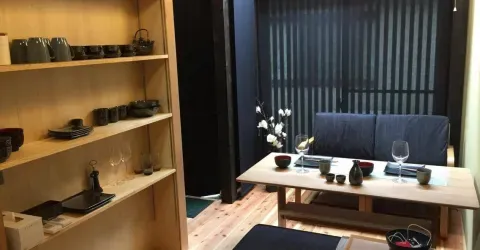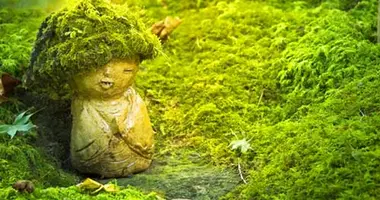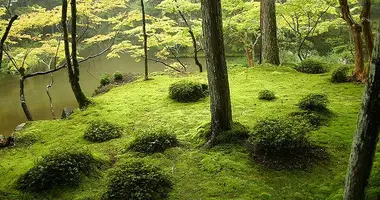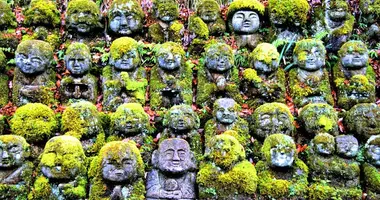Yasaka shrine: history, festivals, and visitor information
Overview and history of Yasaka shrine
The brightly painted Yasaka-jinja Shrine is one of the city's best known and most popular landmarks, especially the two-story vermilion entrance gate at the end of Shijo-dori Avenue.
Yasaka Shrine (八坂神社, Yasaka Jinja), also known as Gion Shrine, is one of the most famous shrines in Kyoto. Founded over 1350 years ago, the shrine is located between the popular Gion and Higashiyama districts and is often visited by tourists walking between the two.
There are several theories about the origin of Yasaka Jinja Shrine. According to the record of the shrine, the history of Yasaka Jinja Shrine may go back as far as 656 (Asuka Era), the second year of the reign of Emperor Saimei. Irishi, an errand from Korea, brought the spirit of Susanoo-no-mikoto to this place.
Besides this view, in Jogan Era, 876, a Buddhist priest from Nara Prefecture, Ennyo, had built a temple, and enshrined Susanoo-no-mikoto, the deity of the region.
Initial construction on the Shrine began in 656. The Shrine became the object of Imperial patronage during the early Heian period.
Deities enshrined at Yasaka shrine
At the center of the main sanctuary of Yasaka Jinja Shrine, Susanoo-no-mikoto is enshrined.
The Yasaka shrine is dedicated to Susanoo-no-Mikoto as its chief kami, with his consort Kushinadahime-no-Mikoto on the east, and eight offspring deities (yahashira no mikogami) on the west. The yahashira no mikogami include Yashimajinumi no kami, Itakeru no kami, Ōyatsuhime no kami, Tsumatsuhime no kami, Ōtoshi no kami, Ukanomitama no kami, Ōyatsuhiko no kami, and Suseribime no mikoto.
Originally Gozu Tenno was enshrined, who was later identified with Susanoo-no-Mikoto from Japanese mythology. As a powerful god capable of warding off calamities, he garnered reverence. This is considered the reason why Yasaka Shrine today is believed to possess the power to ward off epidemics.
Architecture and notable features
The shrine's main hall combines the honden (inner sanctuary) and haiden (offering hall) into a single building. In front of it stands a dance stage with hundreds of lanterns that get lit in the evenings. Each lantern bears the name of a local business in return for a donation.
The main hall stands 15 meters tall and has a roof made of hinoki (Japanese cypress) bark. The architectural style of the building is unique because the roof covers the front shrine as well as the main hall, and this design has become known as Gion-zukuri (Gion construction style).
Other notable features include:
- The Nishiromon Gate, a towering gate serving as the shrine's iconic landmark. It was rebuilt in 1497 and is designated as an important national cultural property.
- The Minami-romon Gate, the main entrance on the southern side. The stone torii gate in front is designated as an Important Cultural Property.
- Two wooden koma-inu (lion dog guardians) in the shrine said to have been carved by the celebrated sculptor Unkei in the 13th century.
- The many lanterns advertising the sponsors of the Gion Matsuri hang from shrine buildings and make for a beautiful sight, especially at night.
Gion Matsuri: Kyoto's famous summer festival
Yasaka Shrine is well known for its summer festival, the Gion Matsuri, which is celebrated every July. Arguably the most famous festival in the whole country, the Gion Matsuri dates back over a thousand years and involves a procession with massive floats and hundreds of participants.
The history of the Gion Festival dates back to the year 869 when a widespread epidemic occurred in various parts of Japan. To pray for protection from the epidemic, 66 floats were erected to enshrine the deities of Gion. The festival is accompanied by the wearing of "Sominsourai no Shisonnari" charms, which are believed to ward off diseases.
The distinctive yamaboko floats that are seen today are said to have appeared around the Muromachi period. They travel through the central streets of Kyoto, as do mikoshi (portable shrines) from Yasaka Shrine, to purify the streets and ward off any potential epidemics or other harm.
The highlight of the festival is the yamaboko procession held on July 17th (pre-festival) and July 24th (main festival). During the pre-festival, starting from 9:00 AM, 33 floats parade through Shijo Street and Kawaramachi Street. Each float has unique decorations representing different neighborhoods, creating a vibrant and captivating spectacle.
Other festivals and events at Yasaka shrine
In addition to the Gion Matsuri, Yasaka Shrine hosts numerous other festivals and events throughout the year:
- Okera Festival on New Year's Day, where a sacred fire is tended from New Year's Eve until the early morning.
- Setsubun celebrations in early February with an evening bonfire and dance dedications.
- Karuta-Hajime ceremony in January, the first Karuta card game play of the new year.
- Ebisu Festival in January, praying for prosperity and security of family.
- Wakana-sai in January, offering young green to pray for happiness.
- Ochatsubo Dochu festival in May, harking back to the Edo period practice of presenting the new tea harvest.
- Shichi-go-san in November, celebrating children's growth and well-being.
Many of these festivals are attended by geisha from the nearby districts who dedicate dances.
Visiting Yasaka shrine
Some tips for visiting:
- Come early to avoid the crowds and take the best pictures, especially of the vermilion gates.
- Visit again after dark to see the shrine and lanterns beautifully illuminated.
- Explore the smaller auxiliary shrines on the grounds dedicated to beauty, love, and warding off diseases.
- If you're lucky, you may catch a wedding procession or a dance performance on the stage.
Cultural significance and influence
Yasaka Shrine has played a significant role in Kyoto's history and cultural heritage for over a millennium. Its Gion Matsuri is a symbol of the city's traditions and its ability to overcome hardships.
The shrine has had a major influence on local traditions and customs, especially in the Gion district. Its festivals provide opportunities for geisha to showcase their artistry and for residents to celebrate together.
As a spiritual center, Yasaka Shrine attracts millions of worshippers and visitors each year, especially during the New Year and cherry blossom seasons. Its importance as both a religious site and tourist destination makes it an integral part of experiencing the rich culture of Kyoto.
Address, timetable & access
Yasaka Shrine
Address
625 Kitagawa, Gionmachi, Higashiyama
605-0073
Japan
Phone
075 561 6155Timetable
Open 24 hours, 7 days a week.Price
FreeAccess
Yasaka Jinja is a 5-10-minute walk from Shijo Keihan Station. From Kyoto Station, take the #206 or #207 bus to the Gion bus stop.Website
http://www.yasaka-jinja.or.jp/

































